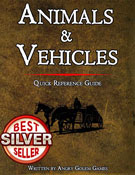Large dragon, unaligned
Armor Class 13 (natural armor)
Hit Points 110 (13d10 + 39)
Speed 20 ft., fly 80 ft.
Proficiency Bonus +3
Proficiency Bonus +6 (5th Edition Advanced Mode)
| STR | DEX | CON | INT | WIS | CHA |
|---|---|---|---|---|---|
| 19 (+4) | 10 (+0) | 16 (+3) | 5 (-3) | 12 (+1) | 6 (-2) |
Saving Throws (suggested) Str +7, Con +6
Skills Perception +4
Senses darkvision 60 ft., passive Perception 14
Languages –
Challenge 6 (2,300 XP)
ACTIONS
- Multiattack. The wyvern makes two attacks: one with its bite and one with its stinger. While flying, it can use its claws in place of one other attack.
- Bite. Melee Weapon Attack: +7 to hit, reach 10 ft., one creature. Hit: 11 (2d6 + 4) piercing damage.
- Claws. Melee Weapon Attack: +7 to hit, reach 5 ft., one target. Hit: 13 (2d8 + 4) slashing damage.
- Stinger. Melee Weapon Attack: +7 to hit, reach 10 ft., one creature. Hit: 11 (2d6 + 4) piercing damage. The target must make a DC 15 Constitution saving throw, taking 24 (7d6) poison damage on a failed save, or half as much damage on a successful one.
5th Edition Advanced Mode
Limiting the power of a character and making the overall difficulty of the game harder, does not reduce the creativity, indeed it does quite the opposite.
The Game Master has the option to use any and all of the instances proposed in this guide, or just some of them according to their preference.
It is the lack of something that move and motivate characters, not the abundance of it
DESCRIPTION
A wyvern is a large dragon-like creature with two scaly legs, leathery wings, and a sinewy tail topped with a poison stinger that can kill a creature in seconds. It has a reptilian head with sharp teeth and horns, and a pair of claws on each foot. Its scales can be of various colors, such as green, brown, black, or red. Wyverns are cousins to the great dragons, but they lack the intelligence and magical abilities of their more powerful kin. Wyverns are also smaller than most dragons, measuring about 15 feet long from nose to tail tip, and weighing about 2,000 pounds.
COMBAT
Wyverns are fierce predators that hunt by sight and smell. They prefer to attack from the air, swooping down on their prey with their claws and bite. They can also use their stinger to inject a potent venom into their victims, causing intense pain and possibly death. Wyverns are not very smart, but they are cunning enough to avoid obvious threats and traps. They can also be trained by skilled handlers to serve as mounts or guardians, though they are never truly loyal or obedient.
HABITAT / SOCIETY
Wyverns are solitary creatures that live in mountainous or hilly regions, where they can find caves or ledges to roost. They are territorial and will defend their hunting grounds from intruders, especially other wyverns. Wyverns mate once a year, usually in the spring. The female lays one or two eggs in a hidden nest and guards them until they hatch. The young wyverns are independent from birth and leave their mother as soon as they can fly.
Wyverns have few natural enemies, except for dragons, griffons, rocs, and other flying creatures that compete with them for food and space. Wyverns are sometimes hunted by adventurers or trophy seekers who covet their scales, teeth, horns, claws, or stingers. Wyvern venom is especially valuable, as it can be used to make deadly poisons or potent antidotes. Wyvern flesh is noted for its foul taste and its hide is difficult to cure. The bones are light and brittle to aid in flying. Certain body parts are used by spell casters as spell components.
Some wyverns have been known to work with evil dragons. Usually these dragons completely dominate the weaker and smaller wyverns. Wyverns tend to lair on mountainsides that overlook forests, jungles, or sometimes plains. They stake out a territory about 25 miles across. If game is sparse, they will hunt with a small group of their own kind. Only young wyverns attack others of their kind, usually to establish new territory. Older wyverns settle disputes in an unknown manner without actual combat.
ECOLOGY
Wyverns can make two sounds: a loud hiss, which sounds like a hot sword plunged into water, and a low, deep-throated growl, much like that of a bull crocodile. They have red or orange eyes that can see well in the dark. They do not have a strong odor, although their lair might smell of a recent kill. An adult wyvern consumes the equivalent of a man-sized to large creature once per day. While it eats them whole, the bones are not digested, and neither are metal objects. The wyvern eats carrion only if desperate.
Wyverns can be used as mounts or pulling animals for vehicles.
The statistics are detailed in the D&D 5e Animals & Vehicles reference guide. Just have a look at the preview on DrivethruRpg.

